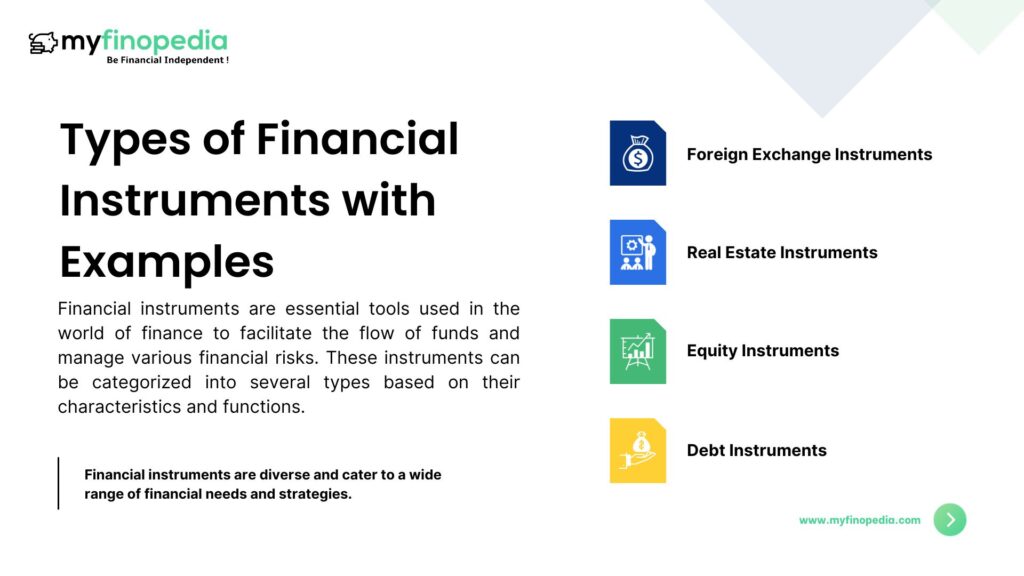Financial instruments are essential tools used in the world of finance to facilitate the flow of funds and manage various financial risks. These instruments can be categorized into several types based on their characteristics and functions.
1. Equity Instruments-These represent ownership in a company. Common stock is a primary example, giving shareholders ownership rights and potential dividends. Preferred stock is another type, offering priority in dividend payments.
2. Debt Instruments– These represent loans or borrowing arrangements. Bonds are a common form of debt instrument, where an entity borrows money from investors and promises to repay the principal with interest at a specified date. Treasury bonds, corporate bonds, and municipal bonds are examples.
3. Derivative Instruments-These derive their value from underlying assets, such as stocks, bonds, or commodities. Futures and options contracts are two prominent derivatives. They are used for hedging and speculating, allowing investors to mitigate risks or bet on price movements.
4. Money Market Instruments– These are short-term, highly liquid instruments used for financing or investing in the short term. Examples include Treasury bills, commercial paper, and certificates of deposit (CDs). They are often considered low-risk due to their short maturities.
5. Foreign Exchange Instruments– These involve trading currencies in the foreign exchange market. Currency pairs are bought and sold, with the aim of profiting from fluctuations in exchange rates.
6. Hybrid Instruments– These combine characteristics of both equity and debt. Convertible bonds, for instance, are debt instruments that can be converted into equity under certain conditions.
7. Real Estate Instruments– Real estate investment trusts (REITs) and mortgage-backed securities (MBS) are examples of financial instruments related to the real estate market. REITs allow investors to access real estate investments without owning physical properties, while MBS bundle mortgages into tradable securities.
8. Commodity Instruments– These allow investors to participate in commodity markets without owning physical commodities. Futures contracts on commodities like oil, gold, and agricultural products are common examples.
9. Private Equity and Venture Capital Instruments– These are investments in private companies. Private equity funds and venture capital investments are often structured as financial instruments to provide returns to investors.
10. Structured Products-These are complex instruments created by combining multiple financial assets, such as bonds, derivatives, and equity. Collateralized debt obligations (CDOs) and mortgage-backed securities (MBS) are examples that played a significant role in the 2008 financial crisis.
11. Options and Swaps-Options give the holder the right but not the obligation to buy or sell an asset at a predetermined price, while swaps involve the exchange of cash flows between parties, often used to manage interest rate or currency risk.
In conclusion, financial instruments are diverse and cater to a wide range of financial needs and strategies. They play a crucial role in the global financial system, enabling investors and institutions to manage risk, raise capital, and invest in various asset classes. Understanding these instruments is fundamental for anyone involved in finance or investment.






